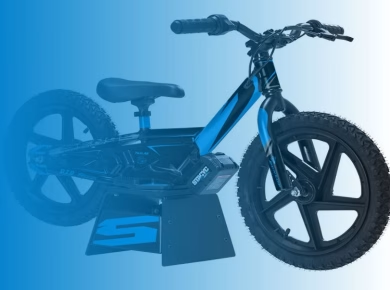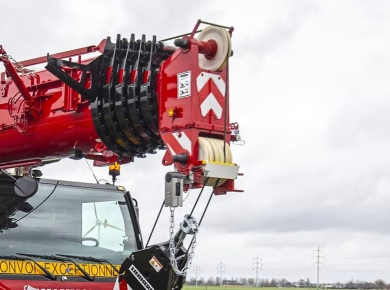When considering the installation of a small inground pool, many homeowners find themselves caught in a whirlwind of excitement and anxiety. The allure of having a private oasis right in your backyard is undeniable, but the reality of costs can often be overwhelming. Unfortunately, contractors may not always disclose the full financial picture, leaving homeowners with unexpected expenses. In this article, we will break down the various costs associated with small inground pools, revealing insights that can help you avoid common pitfalls and make informed decisions throughout the process.
The Initial Investment: What You Can Expect to Pay
The first question on most people’s minds is, “How much is this going to cost?” While the price of small inground pools can vary significantly based on size, material, and location, you can generally expect to spend between $20,000 to $50,000. This range might seem staggering, but understanding the key components contributing to the cost will help clarify the investment.
<h3.Types of Small Inground Pools
Small inground pools typically come in three main types: concrete, vinyl, and fiberglass. Each type has its own cost structure, advantages, and drawbacks.
Concrete pools offer the most customization options, allowing for unique shapes and sizes. However, they are also the most expensive to install and maintain, often starting at around $30,000.
Vinyl pools are generally less expensive, ranging from $25,000 to $40,000, but they come with a limited lifespan for the liner, which may need replacing every 5 to 9 years.
Fiberglass pools are a middle ground, with pricing often between $30,000 and $45,000. They are easy to maintain and can last for decades, making them a popular choice for many homeowners.
<h2.Hidden Costs You Need to Consider
While the initial installation cost is crucial, there are several hidden expenses that can catch you off guard.
<h3.Site Preparation
Before any digging can begin, your yard must be prepared. This might involve landscaping, grading, or even removing trees or other obstacles. Depending on the complexity of your yard, this can add anywhere from $1,000 to $5,000 to your overall costs. It’s essential to have a clear understanding of what your landscape will require to accommodate your new pool.
<h3.Permits and Inspections
Did you know that many locations require permits for pool installation? The costs associated with permits can vary widely based on your municipality, often ranging from $500 to $2,000. Additionally, inspections can incur extra fees, adding to the overall cost. Always check local regulations to avoid unexpected fines or delays.
<h3.Additional Features
Your vision for a small inground pool might include more than just the pool itself. Features like lighting, decking, heating systems, and landscaping can dramatically influence your budget. For instance, installing a heating system can add $3,000 to $5,000 to your overall cost, while a well-designed patio can range from $2,000 to $10,000 depending on materials and size.
<h2.Maintenance Costs: Looking Beyond Installation
Once your pool is installed, the costs don’t stop there. Regular maintenance is essential for keeping your pool in good shape, and it can add up quickly.
<h3.Chemicals and Supplies
Maintaining proper water chemistry is crucial for a safe swimming environment. Expect to spend around $300 to $600 annually on chemicals, depending on the size of your pool and the frequency of use. In addition, you’ll need to account for cleaning supplies, which might add another $100 to $300 each year.
<h3.Utilities
Running your pool will also affect your utility bills. The electricity needed to pump and filter your pool water can increase your monthly costs. On average, homeowners see an increase of about $30 to $100 per month on their utility bills, depending on usage and energy rates in your area.
<h3.Repairs and Upkeep
Over time, wear and tear is inevitable. This might include patching up the pool liner, replacing pumps or filters, or addressing cracks in concrete. Setting aside a budget for repairs, typically around $500 to $1,500 annually, can help you manage these unexpected expenses.
<h2.Timing and Seasonal Considerations
The timing of your installation can also impact costs. Many contractors have busy seasons during the summer months, which can lead to higher prices due to demand. If you can plan your installation during the off-peak season, typically in late fall or early spring, you might save a significant amount.
<h3.Weather Impact
Consider the weather patterns in your area. Unforeseen weather conditions can delay your project and increase costs due to additional labor or materials needed to protect the site. In regions prone to heavy rains or snow, this is a vital consideration.
<h2.Finding the Right Contractor: What to Look For
Choosing the right contractor can significantly affect not only your experience but also the final cost of your pool project.
<h3.Check Credentials and Reviews
Before signing any contracts, take time to research potential contractors. Look for licenses, insurance, and customer reviews. Speaking to previous clients can provide insight into the contractor’s reliability and quality of work.
<h3.Get Multiple Quotes
It’s always wise to obtain multiple quotes. This not only gives you a better understanding of the local market but also allows you to compare services and materials offered. Be cautious of quotes that seem significantly lower than others; they may indicate subpar materials or hidden fees later on.
<h2.Conclusion: Making Informed Decisions
In conclusion, while the dream of owning a small inground pool is enticing, it’s essential to do your homework to avoid unexpected costs. By understanding the various components contributing to the overall price, from installation to ongoing maintenance, you can make informed decisions that will benefit you in the long run.
Remember to consider hidden costs, the ongoing expense of maintenance, and the importance of selecting a qualified contractor. With careful planning and budgeting, you can create a beautiful pool that enhances your outdoor living space without breaking the bank. So take your time, gather information, and enjoy the journey toward your backyard oasis.



